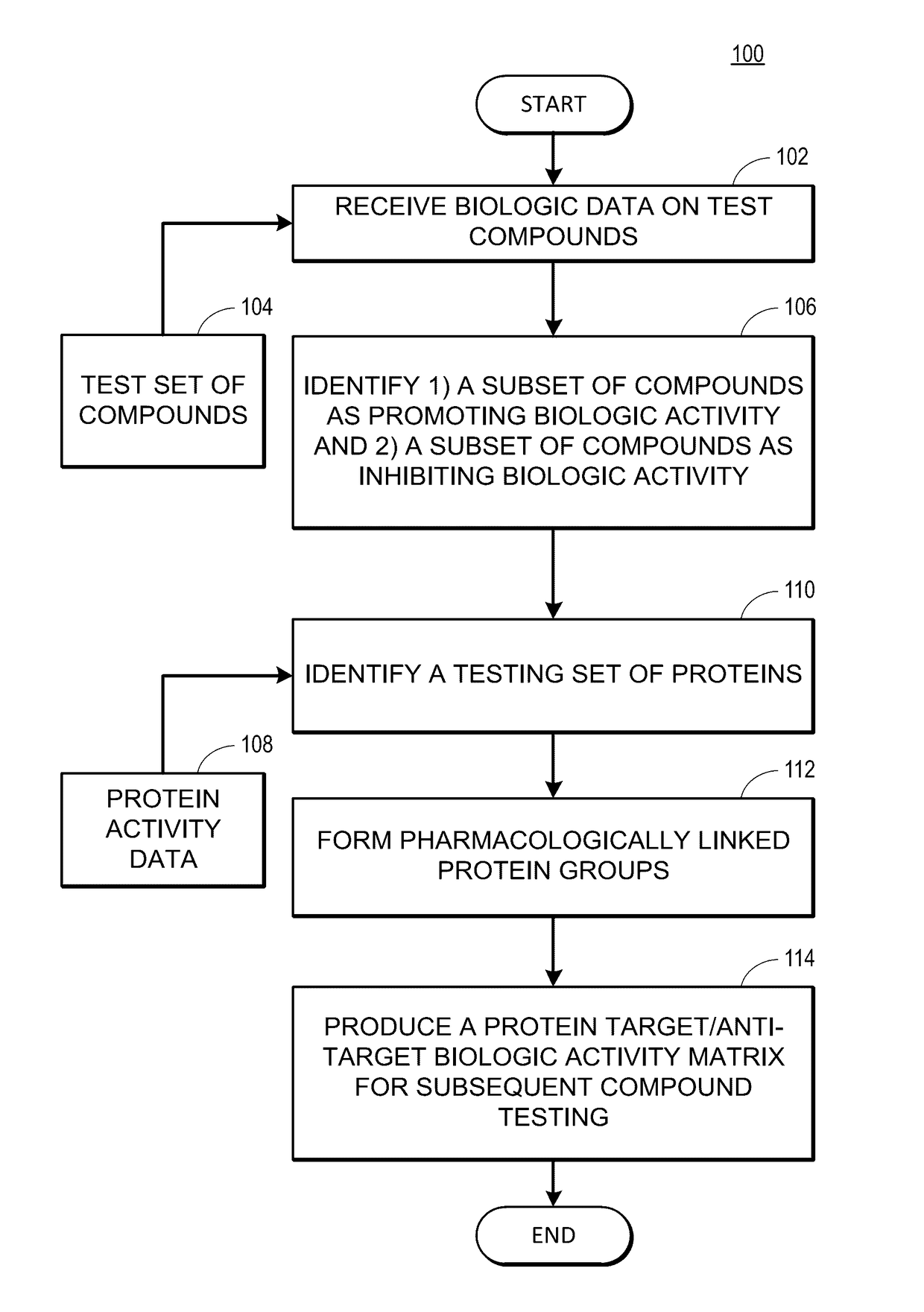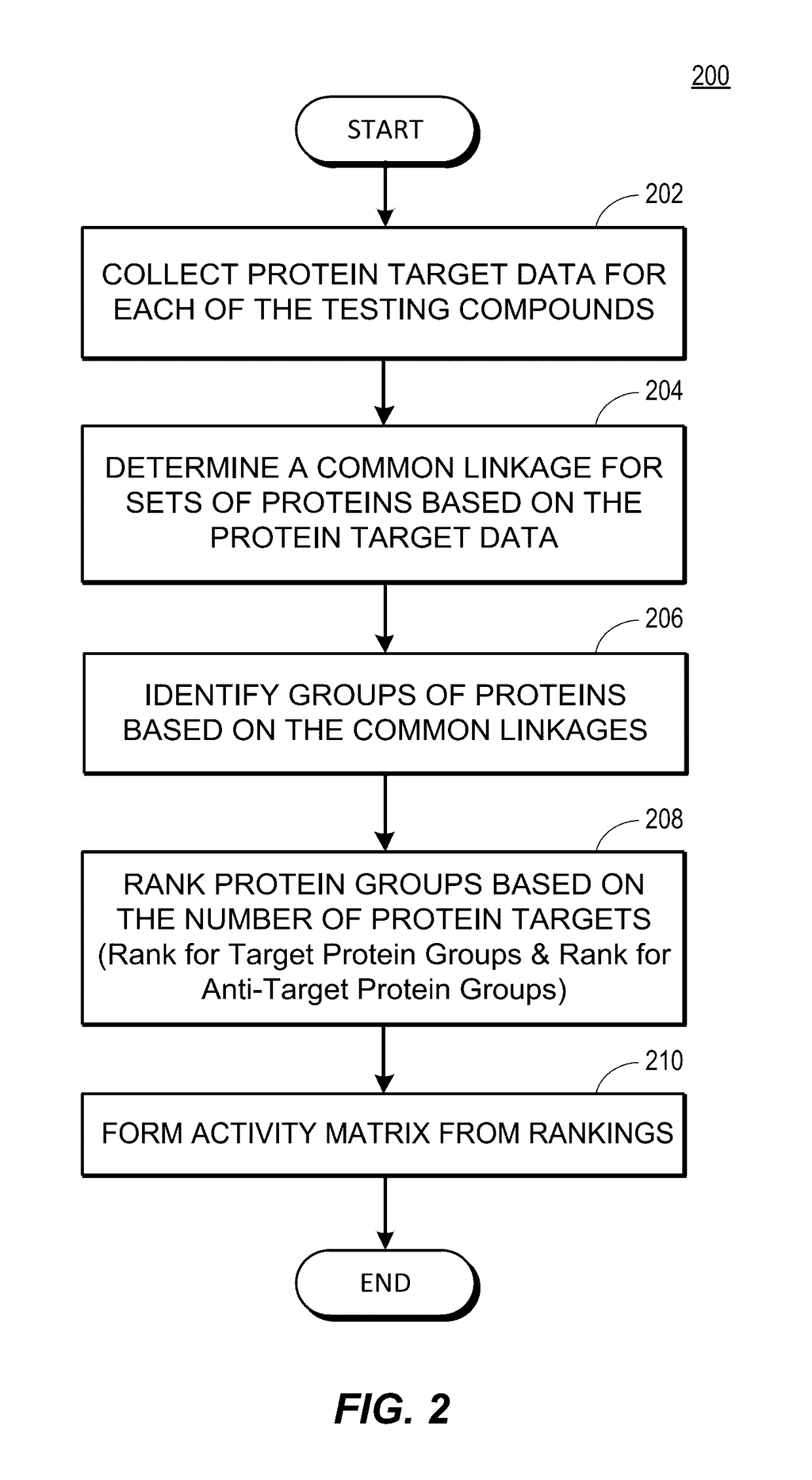Rapid identification of pharmacological targets and Anti-targets for drug discovery and repurposing
a technology of anti-targets and targets, applied in the field of potential treatment compounds, can solve the problems of establishing an automated testing procedure that produces unexpected results and counters the prevailing theories of testing and treatment, and achieves the effect of efficient identification of targets
- Summary
- Abstract
- Description
- Claims
- Application Information
AI Technical Summary
Benefits of technology
Problems solved by technology
Method used
Image
Examples
example
Neurite Outgrowth Examination
[0061]We now describe an example implementation of the present techniques.
[0062]Materials. Mouse α-βIII tubulin antibody was prepared in house. Rabbit anti-βIII, an Alexa Fluor 488 cross-linked goat anti-mouse, and anti-rabbit antibodies were purchased.
[0063]Kinase Inhibitor Libraries. A collection of kinase inhibitor libraries were used, including: EMD Millipore's InhibitorSelect™ Protein Kinase Inhibitor libraries I, II, & III (approximately 240 compounds), a hit-focused library (150 compounds) was designed by querying Vichem's Extended Kinase Inhibitor database for compounds with structural similarity (Tanimoto>0.7, using FP fingerprint) to hits previously identified within the EMD libraries, a library of clinically tested kinase inhibitors (approximately 130 compounds) assembled from commercial vendors, GlaxoSmithKline's Published Kinase Inhibitor Set I and II (PKIS-I and PKIS-II) libraries (approximately 900 compounds), and Roche's Published Kinase ...
PUM
 Login to View More
Login to View More Abstract
Description
Claims
Application Information
 Login to View More
Login to View More - R&D
- Intellectual Property
- Life Sciences
- Materials
- Tech Scout
- Unparalleled Data Quality
- Higher Quality Content
- 60% Fewer Hallucinations
Browse by: Latest US Patents, China's latest patents, Technical Efficacy Thesaurus, Application Domain, Technology Topic, Popular Technical Reports.
© 2025 PatSnap. All rights reserved.Legal|Privacy policy|Modern Slavery Act Transparency Statement|Sitemap|About US| Contact US: help@patsnap.com



